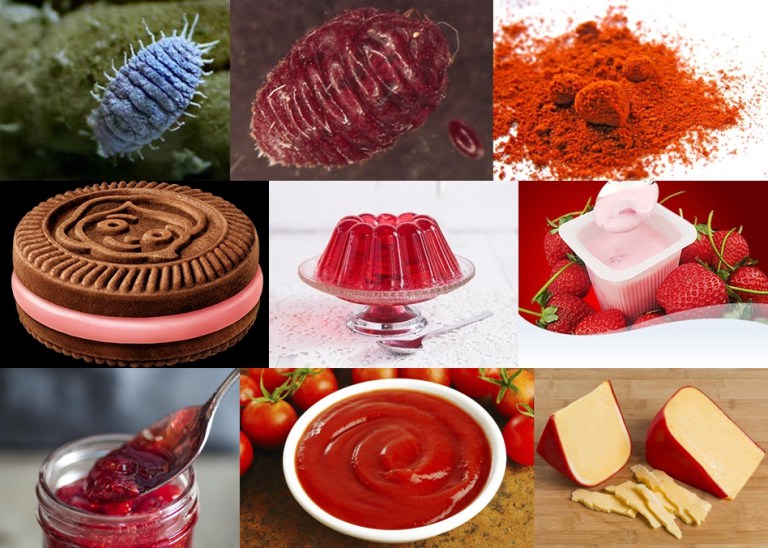(Português) Entenda por que você pode estar consumindo insetos
ORIGINAL LANGUAGES, 25 Sep 2017
David Arioch | Jornalismo Cultural – TRANSCEND Media Service
21 set 2017 – Você costuma ler os rótulos dos produtos que compra? Alguma vez encontrou um ingrediente discriminado como “corante natural carmim de cochonilha” ou “corante carmim”? Sabe o que isso significa? Que esse corante vermelho foi extraído do corpo e dos ovos de um inseto homônimo, ou seja, chamado de cochonilha, que produz o que conhecemos também como ácido carmínico.

Cochonillha, um inseto transformado em corante pelas indústrias alimentícias, de cosméticos e de tintas.
Esse corante está espalhado pela indústria alimentícia, de cosméticos e tintas. O setor de laticínios costuma usar muita cochonilha na fabricação de iogurtes e bebidas lácteas, entre outros produtos. Resíduos desse inseto estão em muitos produtos coloridos, como sucos industrializados, geleias, biscoitos, refrigerantes, sobremesas, queijos, catchup, molhos, embutidos, etc. Também são usados em frigoríficos para alterar o aspecto natural da carne.
E por que não substituir a cochonilha por um ingrediente de origem vegetal? Os fabricantes normalmente alegam que a cochonilha é uma matéria-prima melhor por causa da estabilidade ao calor, além de fatores de oxidação e níveis de acidez mais estáveis. O que resumindo significa que é vantajoso e mais cômodo para a indústria, sem levar em conta, claro, a opinião do consumidor em relação a isso.
______________________________________
 David Arioch é jornalista, pesquisador e documentarista. Trabalha profissionalmente há dez anos com jornalismo cultural e literário.
David Arioch é jornalista, pesquisador e documentarista. Trabalha profissionalmente há dez anos com jornalismo cultural e literário.
Go to Original – davidarioch.com
Tags: Vegan
DISCLAIMER: The statements, views and opinions expressed in pieces republished here are solely those of the authors and do not necessarily represent those of TMS. In accordance with title 17 U.S.C. section 107, this material is distributed without profit to those who have expressed a prior interest in receiving the included information for research and educational purposes. TMS has no affiliation whatsoever with the originator of this article nor is TMS endorsed or sponsored by the originator. “GO TO ORIGINAL” links are provided as a convenience to our readers and allow for verification of authenticity. However, as originating pages are often updated by their originating host sites, the versions posted may not match the versions our readers view when clicking the “GO TO ORIGINAL” links. This site contains copyrighted material the use of which has not always been specifically authorized by the copyright owner. We are making such material available in our efforts to advance understanding of environmental, political, human rights, economic, democracy, scientific, and social justice issues, etc. We believe this constitutes a ‘fair use’ of any such copyrighted material as provided for in section 107 of the US Copyright Law. In accordance with Title 17 U.S.C. Section 107, the material on this site is distributed without profit to those who have expressed a prior interest in receiving the included information for research and educational purposes. For more information go to: http://www.law.cornell.edu/uscode/17/107.shtml. If you wish to use copyrighted material from this site for purposes of your own that go beyond ‘fair use’, you must obtain permission from the copyright owner.
Read more
Click here to go to the current weekly digest or pick another article:
ORIGINAL LANGUAGES: